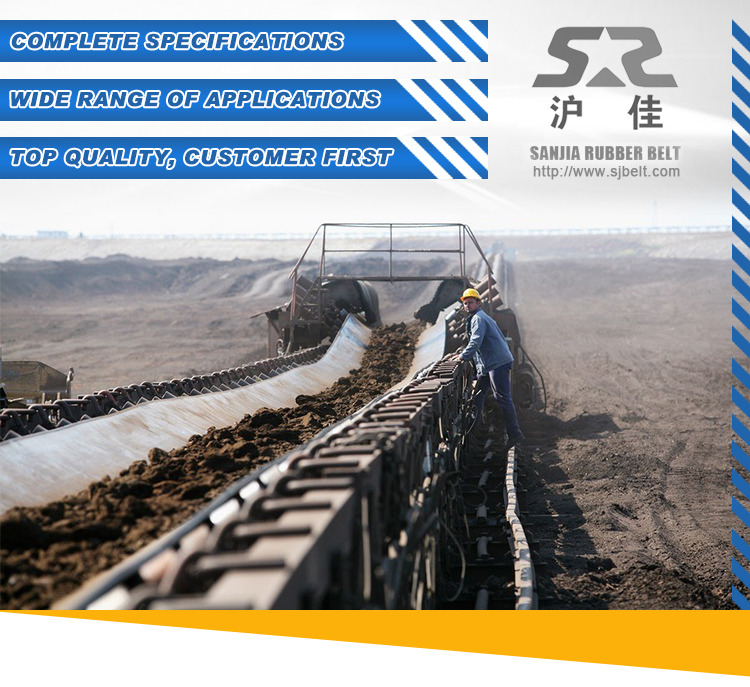first figure
 Heat-resistance conveyor belt can be classified into three models:
Heat-resistance conveyor belt can be classified into three models:
Model 1: Capable of resisting experimental temperature no more than 100 ℃, in code of T1.
Model 2: Capable of resisting experimental temperature no more than 125 ℃, in code of T2.
Model 3: Capable of resisting experimental temperature no more than 150 ℃, in code of T3.
Model 4: Capable of resisting experimental temperature no more than 175 ℃, in code of T4.
Physical Properties of Cover Rubber after Heat-resistance Experiment Conform to Provisions of the Table
| Item | Model |
| Model 1 | Model 2 | Model 3 | Model 4 |
| Change Range |
| Hardness | Difference after and before Aging(IRHD) | 20 | ±20 | ±20 |
| Maximum Value after Aging(IRHD) | 85 |
| Tensile Strength | Reduction of Property Change Rate%≤ | -25 | -30 | -40 | -40 |
| Minimum Value after Aging(Mpa) | 12 | 10 | 5 | 5 |
| Elongation at Break | Property Change Rate% | -50 | -55 | -55 |
| Minimum Value after Aging% | 200 | 180 | 180 |
Interlayer Bonding Strength
| Index Item | Between Fabric Layers | Between Cover Layer and Belt Core |
Thickness of Cover Layer
0.8-1.5mm | Cover layer thickness>1.5mm |
| Average of All Types, N/mm, No Less Than | 3.0 | 2.2 | 2.6 |
| Minimum Peak of All Types, No Less Than | 2.0 | 1.6 | 2.0 |
product application

This product is applicable to the following scenario:
Used in mine, cement plant, steel and Iron factory, metallurgy, construction, ports and etc.
